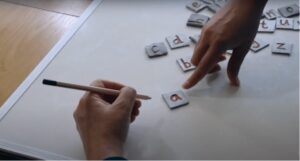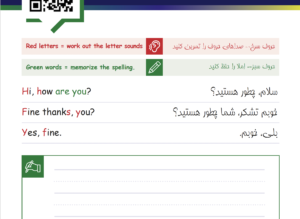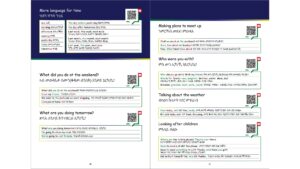
The course also helps people to learn to read and write. It’s designed to be used by people who can’t read and write in their own language. Lack of L1 literacy means you may never have held a pen before, and don’t understand the idea that letters make sounds, or that these sounds join together to create words.
For this reason we have videos showing how to make the shapes of letters, and we use words and pictures from their own language to help them learn the sounds the letters make.
English speaking children in schools already know the words and how they work in sentences – so learning to read and write is a lot easier for them. Non-literate adult learners have a lot more ground to cover!
So… the important thing when trying to learn language and literacy at the same time is to learn how to speak the language – by listening – before trying to use it to learn to read and write. Once your ear knows the sounds, you can try to work out what matching letters to use to read and write them.
For people interested in teaching non-literate students to read, here is a breakdown of some of the micro steps involved (which should be learned in parallel rather than in sequence, so the skills build at the same time and gradually consolidate together):
- Holding and using a pen
- Naming the phonics alphabet picture in own language (asp, boot etc)
- Learning to say the letter sound then word in sequence while pointing at the picture (a, asp, b, boot etc)
- Pointing at the picture and saying only the sound, rather than the word
- Pointing at pictures in random sequence and saying the sound
- Saying the sound when looking at the letter, and checking with the picture key for recall support
- Copying the letter, practising starting in the right place and pencil travelling in the correct direction to complete the letter
- Practising listening to CVC (short consonant/vowel/consonant) words to identify the beginning, middle and end phoneme separately (use fingers to demonstrate)
- Practising connecting the beginning, middle and end sounds to say one syllable words (‘p’, ‘e’, ‘n’; pen). Use fingers to demonstrate
- Learning to spell and write / recognise first sight recognition words (green in the book)








